
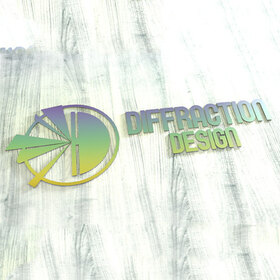
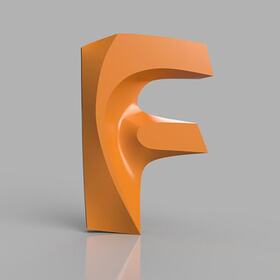
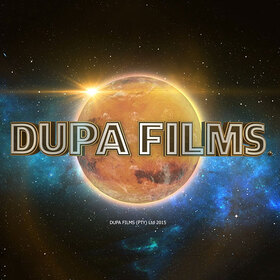
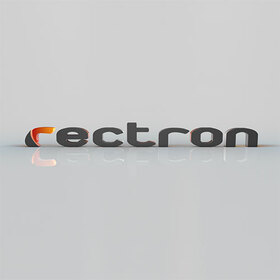
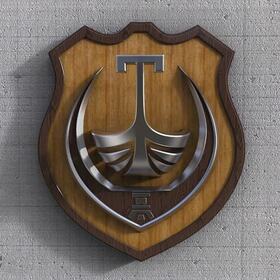
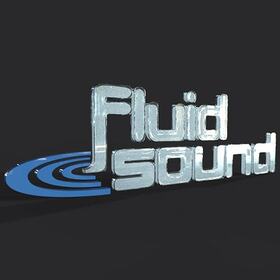







In today's digital landscape, the Internet enables entrepreneurs to launch businesses and offer products and services globally. As a business owner, you recognize the crucial role of marketing in raising awareness and highlighting your offerings' uniqueness. Among marketing elements such as 3D presentation design services, the 3D logo is crucial for its visual appeal and memorability, enhancing promotional efforts and contributing to your business's success and recognition.
Ubiquitous and multi-faceted, the most effective logos, such as Nike's iconic swoosh and McDonald's golden arches, convey a brand's identity across various platforms. A corporate logo is an essential cornerstone upon which a company's visual identity is established, from business cards and billboards to packaging and beyond. A strong emblem is vital for a company's web presence, fostering an instant association with the organization and its offerings.
However, the evolution of logos extends beyond their traditional flat, two-dimensional designs. While still suitable for many scenarios, forward-thinking businesses are exploring innovative approaches to differentiate themselves and establish a competitive edge. A compelling logo communicates to potential customers that a brand is unique and superior.
One of the most effective ways to convey this message is by developing a three-dimensional version of the logo. Utilizing 3D rendering services for your company's logo, or adopting a 3D logo as your primary identity, offers increased versatility for your marketing team in advertising and brand awareness efforts. Explore additional low-cost marketing strategies to enhance brand recognition further.
A 3D logo captivates viewers, including potential customers, by distinguishing itself from competitors and embodying a sense of purpose, elegance, and other attributes associated with your brand. This dynamic visual element supports the message and vision you aim to express, both online and offline, solidifying your brand's identity across all platforms.
3D logos offer numerous advantages over two-dimensional counterparts, including a striking visual impact emphasizing depth and significance. This is made possible by the creative flexibility of the third dimension, which allows for greater artistic expression. 3D animation services can enhance logo design and create a more immersive experience.
The distinction between 2D and 3D logos can be likened to the difference between traditional Disney animations, such as Snow White or The Jungle Book, and Pixar's 3D animated films like Toy Story and Cars. Both forms of animation tell captivating stories that leave lasting impressions on viewers, but each achieves this in unique ways. No single animation style is inherently superior; having access to both broadens creative possibilities. Discerning which style to use requires expertise in artistry and design.
Much like how Toy Story revolutionized the animation industry, a 3D logo rendering can propel your company's brand identity into the future. The 3D format captures attention and brings images into focus, offering aspects, shadows, and depth that are unattainable in 2D renderings.
By incorporating a 3D logo, your marketing team can augment existing web strategies and provide an innovative experience for users and potential customers. Effective lead generation is vital for a thriving business, and a 3D logo can help your brand stand out, drawing in more customers and contributing to your company's success.
The demand for 2D to 3D modeling services is rising as many companies are opting to transition from traditional 2D logos to dynamic 3D logos. You’ve undoubtedly encountered these visually engaging 3D logos in digital spaces and print media, often replacing a company’s conventional 2D branding. Although adopting a 3D logo may not be the ideal choice for every organization, the decision to do so will likely yield positive outcomes for many businesses. This is primarily due to the fresh perspective of 3D logos and an enhanced capacity to communicate a company's vision effectively.
Take Sony Ericsson, for instance. Their 3D logo is a multi-dimensional green orb ensconced in a soft, gray, swooping fold. It’s beautiful, elegant, and simple, yet it also perfectly conveys what the brand is all about. The three-dimensional look of the logo mimics the 3D nature of their product offerings. Apple has done the same at times since so many of its products are real, physical items.
Similarly, financial institutions like Barclaycard, telecom giants like AT&T, other providers and developers like XBOX (from Microsoft), and the ubiquitous VOIP application Skype have worked with 3D imagery. These companies have developed three-dimensional logos to enhance their brand and furnish a deeper sense of what they do and can provide to their customers and users. Car companies like Mini and BMW have done the same, which makes perfect sense since they make real-world objects that transport people where they need to go.
Does your company need a 3D logo? It's an important decision to make because the negative impact of ignoring the current wave of utilizing three dimensions in design could be devastating for a business that decides to pass. At what point will it be too late?
Whether you decide to opt for the development of a 3D rendering for your current logo or a new 3D logo altogether, many options exist today. Even if you don’t create the design in-house, it is helpful to understand how the process works. Talented designers often make use of several best practices when developing or augmenting a logo:D
For starters, you want to have some preliminary images for a 3D logo in mind. If you already have a flat logo, this will be much easier, as the leg work has already been done. If your company is starting and you don’t have a 2D logo yet, this will be the beginning of the challenge, though it is incredibly fun.
For this phase, you will want to create images you associate with your business and what services or products are in your wheelhouse. Consider looking at other logos to see what sparks your imagination.
Once you’ve got the imagery down, you’ll need to have a family or style of fonts in mind so your 3D logo designer understands the look you’re trying to achieve. Again, researching the logos of other companies will help with this aspect. See what fonts align with your aesthetic and speak to your designer or marketing team about the practical particulars. In other words, if you are printing your logo on a bottle or package, that could influence your decisions as opposed to a company that mainly displays its logo on screens or flat print media. All of this matters when it comes to logo design, even more so in the case of 3D rendering.
Lastly, you will want to know the color palette for your brand image, images, and typography. For example, blue or green would be natural options for a company working with water or nature. If your organization is a tuxedo rental company, you might use black, gray, and white. These are simple examples, but they elucidate the more general principle: ensure that the colors you pick for your logo enhance your brand image and are recognizable in the broader sense of what you and your company aim to do.
Be confident with your choices because branding redesign can be lengthy, expensive, and ineffective. If you have images, fonts, and colors in mind when you employ a 3D logo designer or team, you will likely be in for a much smoother and less painful process from start to finish than if you went in blind, without any notion of what you wanted to achieve. Simply having other companies’ logos as your starting point can be a great place to find inspiration and begin crafting a corporate identity that will generate leads, be a beacon of your business's character, and last your company's lifetime.
The previous section should help you get a glimpse of what works and what doesn't when it comes to 3D logo design. It’s also worth taking a moment to discuss the major software application packages that graphic designers use to create three-dimensional renderings of logos. Numerous software options exist, but the four types below are some of the most powerful 3D logo rendering and design tools for seasoned and novice 3D logo artists.
By partnering with Cad Crowd, you can delegate design tasks to our skilled professionals, allowing you to focus on expanding your business. Rest assured that top-tier designers and 3D logo rendering artists diligently craft a lasting brand identity tailored to your needs.
Cad Crowd is the premier destination for 3D logo design, creation, and stunning 3D rendering services that will bring new life into your brand. Reach out to us today for a free quote!
We work with only the finest freelancers in the world for everything we do, including 3D logo rendering. Our designers, artists, and engineers have an enormous amount of experience working hands-on with businesses and leaders in practically every field and industry. Whatever your logo needs may be, rest assured that Cad Crowd can help you get exactly where you want to be. We can find a design solution for anyone, no matter what field you work within.
Cad Crowd can assist you by making use of a wide range of designers and software programs. Our network consists of only the highest quality specialists utilizing the best and latest design software. If there’s a specific app or software program you need us to use, just let us know, and we’ll connect you to the ideal artist or designer for your project. Contact us today for a free quote!


